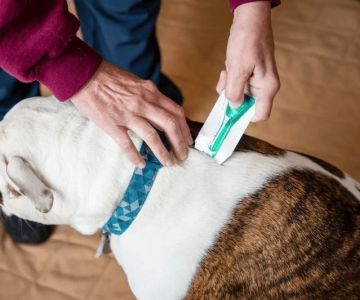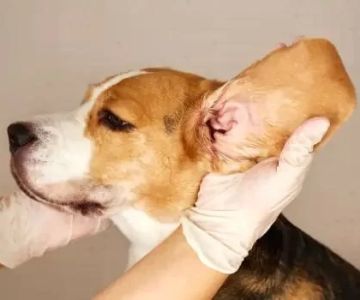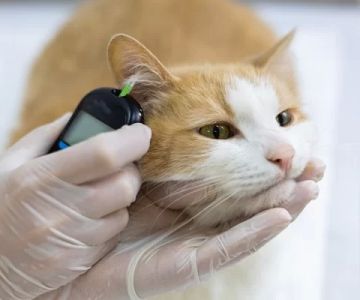How to Groom Your Cat’s Fur: Expert Tips for a Healthy Coat
- 1. The Importance of Grooming Your Cat’s Fur
- 2. Essential Tools for Grooming Your Cat
- 3. How to Groom a Long-Haired Cat
- 4. Establishing a Regular Grooming Routine
- 5. Common Grooming Issues and How to Solve Them
- 6. Conclusion: Keep Your Cat’s Fur Healthy and Beautiful
1. The Importance of Grooming Your Cat’s Fur
Grooming your cat’s fur is essential not only for maintaining their appearance but also for their overall health and well-being. Regular grooming helps prevent matting, reduces shedding, and keeps your cat's skin clean. It also provides an opportunity to check for signs of skin conditions, fleas, or ticks. Additionally, grooming can be a bonding experience between you and your feline friend, helping them feel comfortable and relaxed.
Whether you have a long-haired or short-haired cat, grooming is a key part of their care routine. This article will guide you through the steps to properly groom your cat’s fur, ensuring they stay healthy, comfortable, and looking their best.
2. Essential Tools for Grooming Your Cat
Before you start grooming your cat, it’s important to gather the right tools. The tools you need depend on your cat's fur type, but some basic grooming tools include:
- Brush or Comb: A cat brush is essential for keeping your cat’s fur smooth and free from tangles. For short-haired cats, a soft brush will suffice, while long-haired cats require a slicker brush or comb for detangling.
- Cat Nail Clippers: Trimming your cat's nails regularly is an important part of grooming. It prevents scratching and keeps your cat comfortable.
- Flea Comb: A flea comb is helpful in checking for flea infestations and removing any pests from your cat's fur.
- Shampoo: If your cat needs a bath, make sure to use a cat-specific shampoo to avoid irritating their skin.
Having the right tools will make grooming your cat easier and more effective, ensuring you keep their coat clean and healthy.
3. How to Groom a Long-Haired Cat
Long-haired cats require more frequent grooming compared to short-haired cats. Their fur can easily become matted, which can cause discomfort and skin problems. Here are some tips for grooming a long-haired cat:
- Brush Regularly: Long-haired cats should be brushed daily to prevent tangles and mats from forming. Start from the roots and work your way to the tips to ensure you remove any knots and tangles.
- Use a Slicker Brush: A slicker brush is ideal for removing mats in long-haired cats. Be gentle, as pulling too hard can hurt your cat.
- Trim the Fur: Regular trimming is essential to keep your cat’s coat manageable. Focus on trimming around the paws, under the tail, and the belly area where mats tend to form.
- Check for Parasites: While grooming, check your cat's fur for signs of fleas or ticks. If you find any, take action immediately to treat them.
By following these grooming techniques, you can keep your long-haired cat comfortable and their fur looking beautiful.
4. Establishing a Regular Grooming Routine
Establishing a regular grooming routine is essential for maintaining your cat's fur. A consistent routine will not only keep your cat looking great but also help them get used to the grooming process, making it less stressful for both of you.
For short-haired cats, brushing once a week is usually sufficient, while long-haired cats may need grooming every day. Bathing your cat should be done only as needed, typically every 4-6 weeks or when your cat gets particularly dirty.
To make the grooming experience more enjoyable for your cat, try to start slowly, using gentle brushing and offering rewards like treats or affection after each session. Over time, your cat will learn to enjoy their grooming sessions, making it easier to keep their fur healthy and clean.
5. Common Grooming Issues and How to Solve Them
Even with regular grooming, there are a few common issues that can arise. Here are some of the most common grooming challenges and how to address them:
- Matting: If your cat’s fur becomes matted, use a detangling spray or conditioner to loosen the mats before carefully combing them out. In extreme cases, a trip to the groomer may be necessary.
- Shedding: Excessive shedding is common, especially during seasonal changes. Brushing your cat regularly will help reduce shedding and keep loose fur from accumulating around your home.
- Skin Irritation: If you notice any redness or bumps on your cat’s skin, it could be a sign of allergies or parasites. Consult your veterinarian for advice and possible treatment options.
By staying on top of these common grooming issues, you can ensure your cat stays healthy and comfortable while looking their best.
6. Conclusion: Keep Your Cat’s Fur Healthy and Beautiful
Grooming your cat’s fur is an important part of their overall health and well-being. With the right tools, techniques, and a regular grooming routine, you can keep your cat’s coat in excellent condition. Whether you have a short-haired or long-haired cat, grooming is essential to preventing mats, reducing shedding, and detecting health issues early.
If you need expert advice or help with grooming your cat, visit Hidden Brook Veterinary for professional grooming tips and services. Your cat’s health and comfort are worth the extra care!









